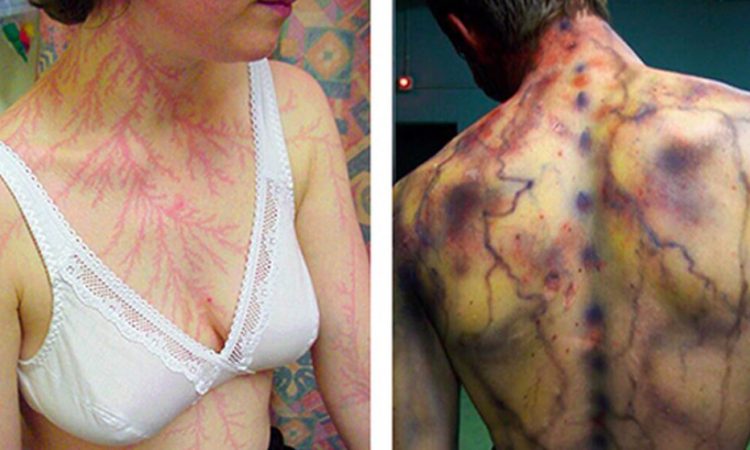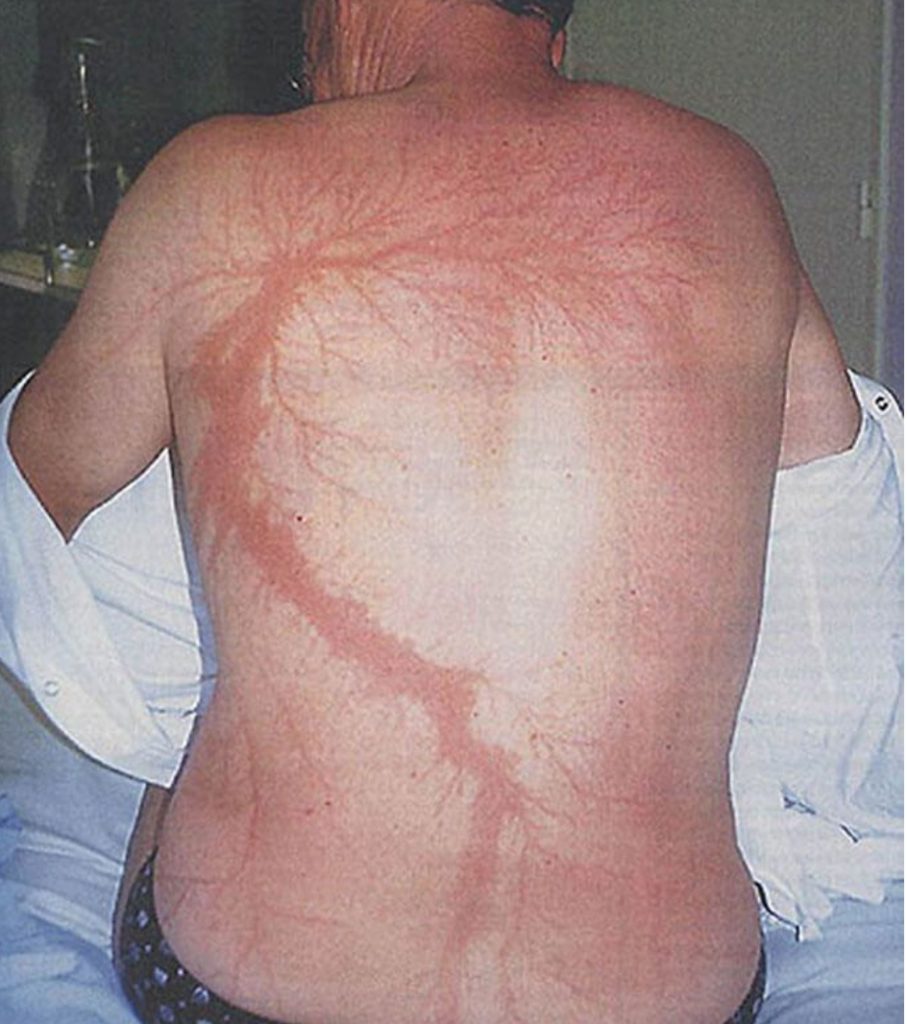
The idea of getting struck by lightning sounds like an incredibly scary thing to experience.
After all, we have all seen just how dangerous lightning can be
Some of us may have even been casually driving down the road one rainy day when we see a lightning strike one of the trees on the pavement, splitting it clean in half!

And then seconds later, it starts smoking and, if the wood is dry enough, it catches fire.
Certainly, lightning is one of the more terrifying weapons that Mother Nature will casually dish out at the world around her.

Considering just how powerful a lightning strike can be, it is no wonder we are scared of getting struck by it.
Luckily for us, the math puts our chances of being hit is about 1 in every 300,000 strikes.
You would have better luck trying to win the lottery!
Being struck is an undeniably horrifying experience, however, considering that a lightning strike can reach up to 50,000 degrees Fahrenheit.
For those who need this figure to be put into context, by contrast, the surface of the sun is just a touch over 9, 940 degrees Fahrenheit.
In other words, for a brief split second, victims would have the heat of the sun flash throughout their entire body.
This, obviously, leaves behind some serious scars that are often called Lichtenberg scars, which are named after the scientific phenomenon called Lichtenberg figures.
Also known as Lichtenberg dust figures, or Lichtenberg-Figuren in German, it is a visual effect that is the result of electricity discharging into multiple branches.
It can usually be seen clearly on golf courses, where the earth and grass are scarred after being struck by lightning.
As you can imagine, this happens in people as well – survivors of a lightning strike are usually left permanently scarred.
Such scarring often appears in the form of red marks that take on the appearance of the Lichtenberg figures.
They are the result of your blood literally boiling inside your veins and capillaries along the skin’s surface, thanks to the incredibly high temperatures a lightning strike can achieve.
Some scars can end up appearing as the skin has been boiled – no surprises there, considering how hot lightning can get.
Considering how deadly lightning can be, it may surprise you that about 90% of its victims actually survive and live to tell the tale

This is because one can be struck in about 5 different ways – step voltage, side flash, contact potential, and direct strike.
Out of all the possible ways to be struck by lightning, only a direct strike is statistically the most fatal.
This is because in this scenario, lightning strikes either you or something conductive you are holding onto dead-on instead of discharging most of its voltage directly into the ground
Rather, you ought to be more concerned about what happens when a billion volts of electricity gets pumped into your system.
Cardiac arrests, damage to the brain and nervous system, spinal cord injuries, seizures, and respiratory paralysis are just the start of your list of concerns.
Good thing lightning strikes are so rare – just stay indoors when there is a thunderstorm and you will be fine!




